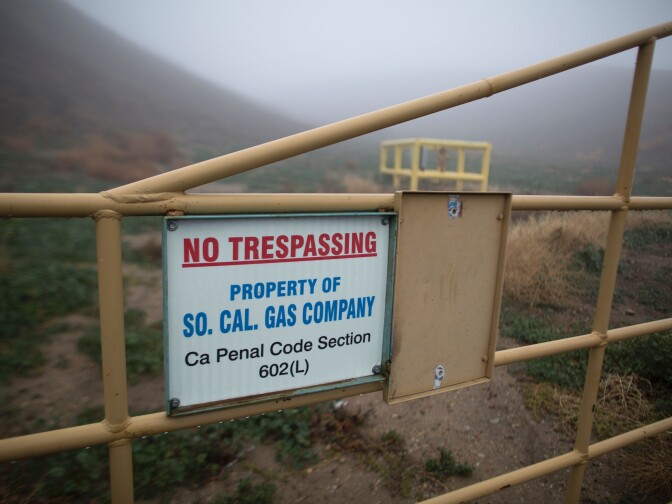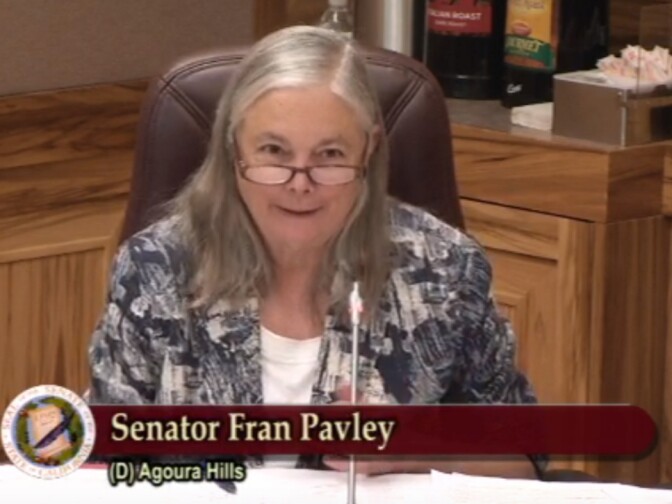With our free press under threat and federal funding for public media gone, your support matters more than ever. Help keep the LAist newsroom strong, become a monthly member or increase your support today.
Brown signs Aliso Canyon bill, but gas shortage blackouts still possible this summer
California state energy and local utility officials defended their findings Tuesday that the continued near-shutdown of the Aliso Canyon natural gas storage field near Porter Ranch could result in up to 14 days of power outages this summer.
The fear is that gas-fired power plants could come up short on the hottest days of summer, when air-conditioner use peaks demand for gas beyond what the power plants ordered in advance.
Also Tuesday, Gov. Jerry Brown signed SB 380 into law. The measure by Sen. Fran Pavley (D-Agoura Hills) allows the Aliso Canyon storage field to resume injections and withdrawals — but only after its gas wells pass safety tests.
A blown-out gas well poured methane and other chemicals into the atmosphere from late October through mid-Feburary. During the leak, as many as 8,000 Porter Ranch-area households left the area. About 3,700 families remain away from their homes out of concern for lingering health effects from the gas.
Normally, the gas that is imported via interstate pipelines into the SoCal Gas distribution system in the Los Angeles/Orange County area is plenty for daily needs — but it can fall short when demand goes up, especially on a day when part of the gas system is undergoing either planned or unplanned maintenance or repairs.
The Aliso Canyon gas field would normally fill the gap, but it's been stalled for months. The Aliso Canyon Natural Gas Storage Facility has been barred by the state from injecting or withdrawing gas from the underground reservoir since December.
Katie Elder, a consultant to the state Energy Commission, said there's not enough extra gas in the system to cover the demand.
"That difference between the gas that they schedule to bring into the system and the gas that they actually use causes us a problem without Aliso Canyon," Elder said.
Officials from the state Public Utilities Commission, the California Independent Systems Operator, Los Angeles Department of Water and Power, San Diego Gas and Electric and SoCal Gas also testified.
Some environmentalists and Porter Ranch residents want the gas field shut down.
Engineer Bill Powers, a consultant to Food and Water Watch, said the state's plan to stretch gas supplies this summer could be a blueprint for a future without Aliso Canyon's storage capacity.
Southern California Gas Company is making slow progress on the safety tests that could allow injections and withdrawals to resume, having put 101 of its 114 wells through a first phase of basic tests and six wells through a more advanced battery of four added tests. The company has taken 31 wells out of service.
The Pavley law also requires the state Public Utilities Commission to report next year on the long-term feasibility of minimizing gas storage at Aliso Canyon.
The gas field can hold up to 86 billion cubic feet of gas, but during the well blowout, the field was reduced to just 15 billion cubic feet. That's about enough gas to get the Los Angeles-Orange County region through about three to four days of peak usage.










